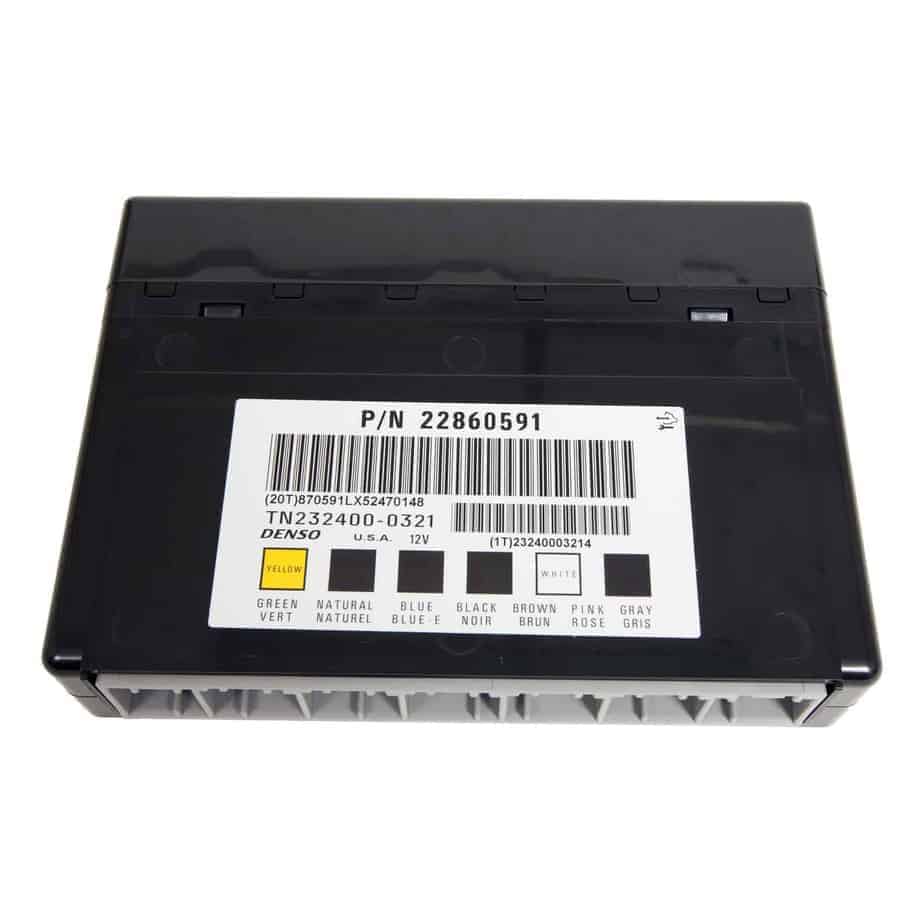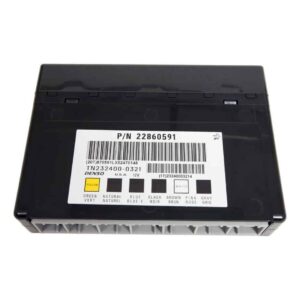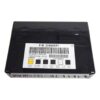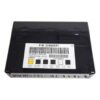Restore Your Vehicle’s Electrical System with a Plug-and-Play BCM
Are you chasing electrical gremlins in your GM vehicle? Flickering lights, power windows with a mind of their own, or a security system that randomly prevents you from starting your car are classic signs of a failing Body Control Module (BCM). As the central hub for your vehicle’s body electronics, a faulty BCM can create a host of frustrating and unpredictable problems. This isn’t just an inconvenience; it can affect vehicle safety and security. This is the reliable, straightforward solution to get your vehicle back to 100% functionality without an expensive trip to the dealership.
We take the guesswork and hassle out of the repair. Simply provide your vehicle’s VIN during checkout, and our technicians will program this GM Body Control Module with the latest GM software specific to your car or truck. It arrives at your door ready to install, eliminating the need for specialized scan tools for programming. This service ensures all your vehicle’s original features and options are restored correctly.
A Technician’s Notebook: The Intermittent Fault Fiasco
I once had a 2010 Chevy Tahoe in the bay where the owner was ready to sell the truck. For months, the radio would shut off, the door locks would cycle while driving, and occasionally, the dash would go completely dark. He’d been to two other shops that couldn’t find the issue because it was so intermittent. After checking the main power and ground connections, I focused on the BCM. A failing BCM often won’t throw a hard code right away; instead, its internal logic circuits or relays start to break down, causing these bizarre, random events. Swapping in a pre-programmed BCM fixed every single issue. It’s a perfect example of how this single component can be the root of a dozen different problems.
Common Signs of a Failing BCM
If your vehicle is exhibiting any of these symptoms, a failing BCM is the likely culprit. Replacing it can resolve numerous issues at once.
- ✔ Power windows, mirrors, or door locks operating erratically or not at all.
- ✔ Interior or exterior lights flickering, staying on, or not turning on.
- ✔ The security system or keyless entry failing to work correctly (e.g., security light on, engine won’t start).
- ✔ Horn honking unexpectedly or not working when pressed.
- ✔ Inaccurate or non-functional instrument panel gauges.
- ✔ Communication error codes, such as U0140 (Lost Communication With Body Control Module).
- ✔ Parasitic battery drain that leaves you with a dead battery overnight.
A Straightforward Guide to Installation
Installing your new GM Body Control Module is a manageable task for a DIY enthusiast. While the location varies slightly by model (see fitment list), the general process is similar.
- Safety First: Always disconnect the negative terminal from your vehicle’s battery and wait about 10-15 minutes to allow all systems to power down completely.
- Locate the BCM: On most listed vehicles, the BCM is found under the driver’s side of the dashboard, often near the steering column or behind a kick panel. On vans like the Express or Savana, it’s typically behind the center dash trim.
- Disconnect and Remove: Carefully unplug the electrical connectors. Most have a locking tab that needs to be pressed or lifted. Once disconnected, unbolt or unclip the old BCM from its mounting bracket.
- Install the New Module: Mount your new, pre-programmed BCM in the same location and securely plug in all the electrical connectors. You should hear a ‘click’ as they lock into place.
- Reconnect and Test: Reconnect the negative battery terminal. Turn the key to the ‘On’ position (without starting the engine) and test your electronics: windows, locks, lights, and radio.
Important Post-Installation Notes
While this module is programmed for your VIN, some vehicle systems may require a ‘handshake’ procedure after installation to sync properly. These do not require programming but may require a capable scan tool.
- Airbag System Sync: If your airbag warning light is on after installation, a procedure called ‘Setup SDM Primary Key in BCM’ is needed. This syncs the new BCM with the airbag system and is a common security step.
- Brake Pedal Position Relearn: On some models, a brake pedal position sensor relearn may be necessary to ensure correct brake light and traction control operation.
- No Core Charge: You are not required to return your old module. There is no core charge or deposit associated with this purchase.
Disclaimer: Vehicle systems vary. We always recommend consulting a factory service manual or a certified technician if you are unsure about any step.
Verified Vehicle Compatibility
This module is a direct replacement for a wide range of GM vehicles and part numbers. Please verify your vehicle is on this list and that your original part number matches one of the numbers below.
Replaces Part Numbers: 10382479, 15093910, 15276271, 15299986, 15819552, 15828601, 15837419, 15872388, 15872421, 15880684, 15921352, 15921353, 15948438, 15948439, 20815898, 20839063, 20864767, 20864768, 20921435, 20921436, 20935349, 22860591, 25826124, 25826125, 25847588, 25847589, 2592622, 25910474, 25934762, 25934763, 95151084
Fits Models Including:
- Acadia (2007-2012)
- Avalanche 1500 (2010)
- Caprice (2011-2013)
- Captiva Sport (2012)
- CTS (2008-2013)
- DTS (2006-2011)
- Enclave (2008-2012)
- Equinox (2007-2009)
- Escalade, ESV, EXT (2010)
- Express / Savana Vans (2008-2012)
- G8 (2008-2009)
- Hummer H2 (2008-2009)
- Impala (2006-2013)
- Lucerne (2006-2011)
- Monte Carlo (2006-2007)
- Outlook (2007-2010)
- SRX (2007-2009)
- STS (2010)
- Suburban 1500 (2010)
- Tahoe (2010)
- Torrent (2007-2009)
- Traverse (2009-2012)
- Vue (2008-2010)
- Yukon / Yukon XL 1500 (2010)
Frequently Asked Questions about the GM Body Control Module
Do I really need to provide my VIN?
Yes, absolutely. Providing your VIN is the only way we can program the module with the correct software and vehicle-specific options. This step is what makes the installation a plug-and-play process and ensures all features work as intended.
Will this fix my ‘Service Theft System’ message?
In many cases, yes. The BCM is a critical part of the vehicle’s anti-theft (Passlock/Passkey) system. A failing BCM is a very common cause of security system warnings and no-start conditions.
What tools do I need for the installation?
For most vehicles, you’ll only need basic hand tools like a socket set and a trim removal tool to access the module. No programming tools are required on your end. However, a professional scan tool might be needed for post-install relearn procedures like the airbag sync, if the light appears.
Is there a core charge?
No. We do not require you to send your old BCM back. You can keep it or dispose of it yourself. The price you see is the final price with no hidden core fees.
What if I install it and still have problems?
First, double-check all connector plugs are fully seated. If issues persist, verify if your vehicle requires one of the post-installation procedures mentioned, like the brake pedal position relearn. While this module fixes the vast majority of BCM-related issues, it’s important to ensure the root cause was properly diagnosed.



